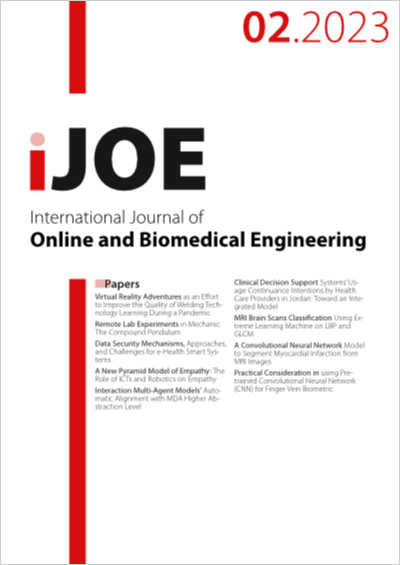MRI Brain Scans Classification Using Extreme Learning Machine on LBP and GLCM
DOI:
https://doi.org/10.3991/ijoe.v19i02.33987Keywords:
Brain tumor, MRI, ELM, Classification, GLCM, LBP, ANOVAAbstract
The primary goal of this study is to predict the presence of a brain tumor using MRI brain images. These images are first pre-processed to remove the boundary borders and the undesired regions. Gray-Level Co-Occurrence Matrix (GLCM) and Local Binary Pattern method (LBP) approaches are mixed for extracting multiple local and global features. The best features are selected using the ANOVA statistical approach, which is based on the largest variance. Then, the selected features are applied to many state of arts classifiers as well as to Extreme Learning Machine (ELM) neural network model, where the weights are optimized via the regularization of RELM using a suitable ratio of Cross Validation (CV) for the images' classification into one of two classes, namely normal (benign) and abnormal (malignant). The proposed ELM algorithm was trained and tested with 800 images of BRATS 2015 datasets types, and the experimental results demonstrated that this approach has better performance on several evaluation criteria, including accuracy, stability, and speedup. It reaches to 98.87% accuracy with extremely low classification time. ELM can improve the classification performance by raising the accuracy more than 2% and reducing the number of processes needed by speeding up the algorithm by a factor of 10 for an average of 20 trials.
Downloads
Published
How to Cite
Issue
Section
License
Copyright (c) 2023 Jhan Al-Awadi, Assistant Professor Dr. Hadeel K. Aljobouri, Dr. Ali M. Hasan

This work is licensed under a Creative Commons Attribution 4.0 International License.



